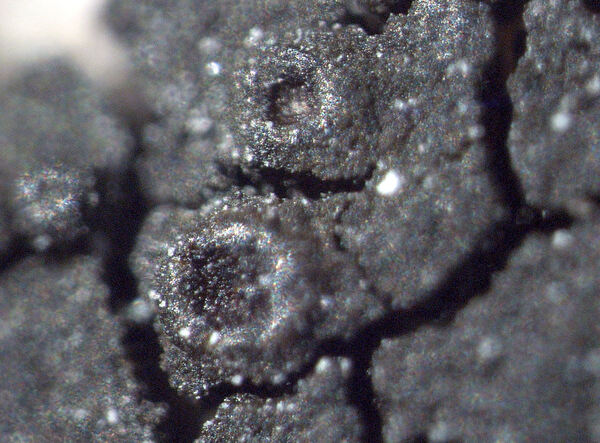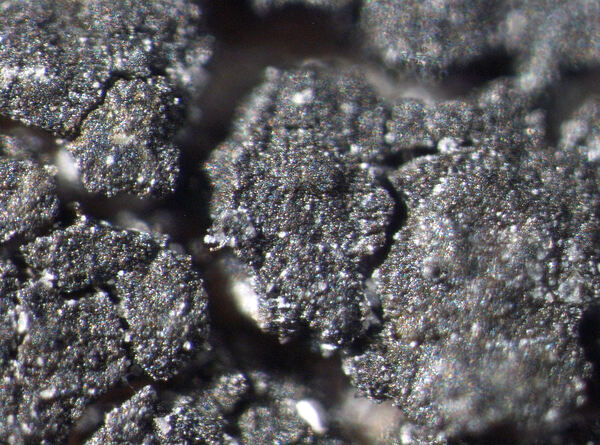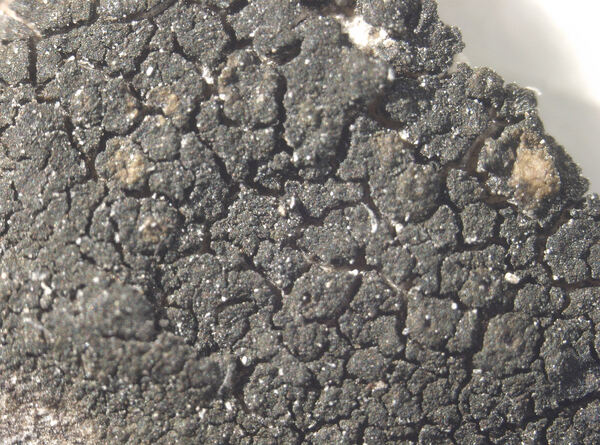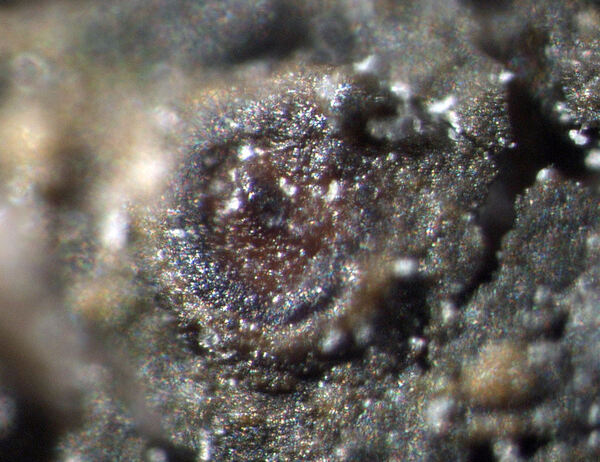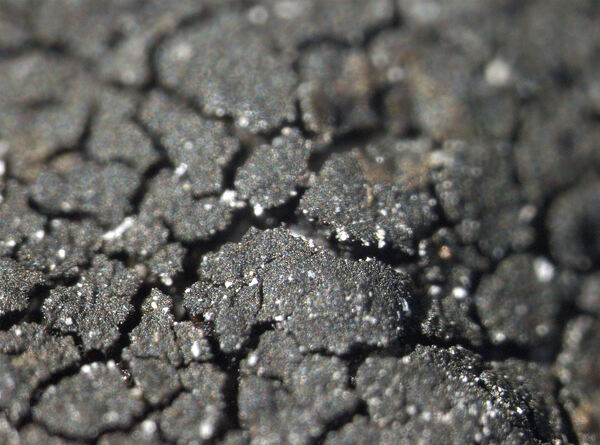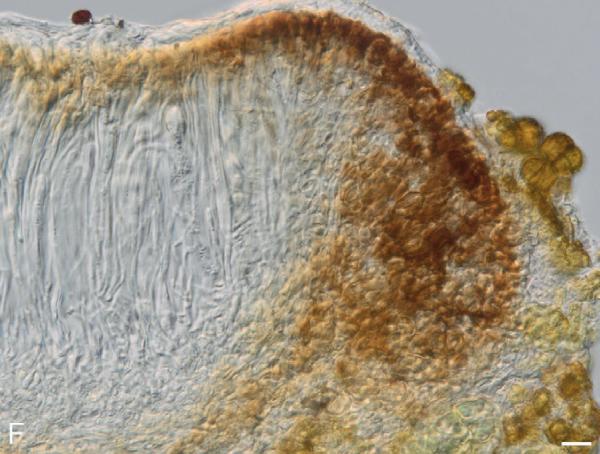Lapismalleus lugubris (A. Massal.) M. Schultz & M. Prieto
in Prieto & al., Studies in Mycology, 109: 641, 2024. Basionym: Stenhammara lugubris A. Massal. - Miscell. Lichenol.: 40, 1856
Synonyms: Psorotichia lugubris (A. Massal.) Arnold; Stenhammara lugubris f. atrata Arnold
Description: Thallus crustose, areolate-verruculose, thick, black to dark olive-brown, epruinose, the areoles dying from the base, with a smooth or only slightly rough surface, but often partially eroded, exposing the pale, cottony lower surface. Thallus anatomy paraplectenchymatous, with ± vertically arranged, robust hyphae that become loose towards the base creating a cottony basal layer. Apothecia usually difficult to observe in non-eroded areoles, zeorine, immersed to subsessile, 0.3-0.6 mm across, with a blackish, often rough but never rilled disc surrounded by a blackish to brownish, thin proper margin, and an indistinct thalline margin, developing from ascogones arising in a tangle of generative hyphae. Proper exciple thin, pale brown in lower part, distinctly wider and dark brown in upper part; epithecium orange-brown; hymenium colourless, K/I+ blue; paraphyses stout, branched and anastomosing, the apical cells subcapitate; hypothecium colourless or pale yellowish brown, K/I+ blue. Asci 8-spored, cylindrical-clavate, with a very thin wall disintegrating or opening by apical ruptures, with an only indistinct amyloid cap, Lichina-type. Ascospores 1-celled, hyaline, ellipsoid to broadly ellipsoid, 6-12 x 4-8.5 µm. Photobiont cyanobacterial, chroococcoid, single-celled, the cells surrounded by a brownish gelatinous sheath. Spot tests: all negative. Chemistry: without lichen substances.
Growth form: Crustose
Substrata: rocks
Photobiont: cyanobacteria, coccaceous (e.g. Gloeocapsa)
Reproductive strategy: mainly sexual
Poorly known taxon in need of further study
Commonnes-rarity: (info)
Alpine belt: absent
Subalpine belt: extremely rare
Montane belt: extremely rare
Dry submediterranean belt: absent
Humid submediterranean belt: absent
Padanian area: absent
pH of the substrata:
1 2 3 4 5
Solar irradiation:
1 2 3 4 5
Aridity:
1 2 3 4 5
Eutrophication:
1 2 3 4 5
Poleotolerance:
0 1 2 3
Altitudinal distribution:
1 2 3 4 5 6
Rarity
absent
extremely rare
very rare
rare
rather rare
rather common
common
very common
extremely common
Loading data...
Occurrence data
Predictive map
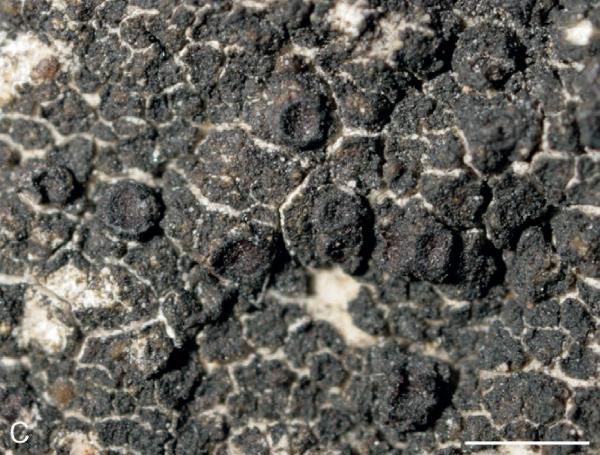
Source: Prieto M., Wedin M., Schultz M. 2024. Phylogeny, evolution and a re-classification of the Lichinomycetes. Studies in Mycology, 109: 595-655. - CC BY-NC-ND
Thallus black, areoles thin with whitish base, apothecia almost lecideine (Psorotichia lugubris f. atrata Arnold 40, M0140084, type). Scale bar: 1 mm
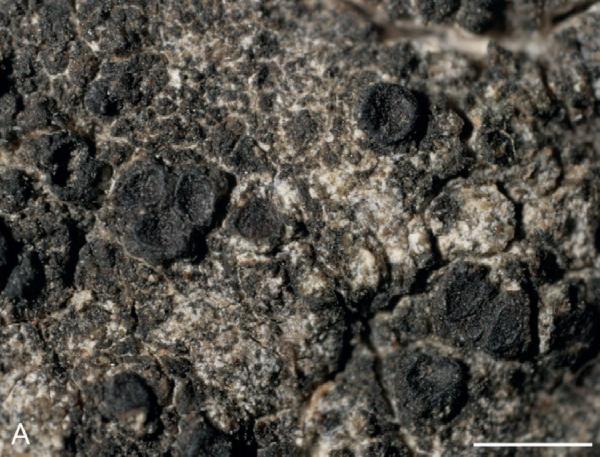
Source: Prieto M., Wedin M., Schultz M. 2024. Phylogeny, evolution and a re-classification of the Lichinomycetes. Studies in Mycology, 109: 595-655. - CC BY-NC-ND
Areoles becoming eroded, apothecia almost lecideine (Hepp Lich. Eur. 728, M0140086, topotype). Scale bar: 1 mm
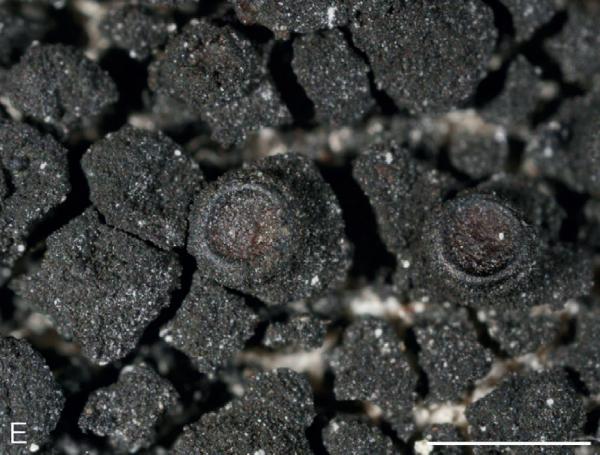
Source: Prieto M., Wedin M., Schultz M. 2024. Phylogeny, evolution and a re-classification of the Lichinomycetes. Studies in Mycology, 109: 595-655. - CC BY-NC-ND
Areoles thick, irregularly polygonal, apothecia (semi)immersed with
widely opened discs surrounded by thin, blackish proper exciple, thalline margin indistinct (Schultz 05566). Scale bar: 1 mm
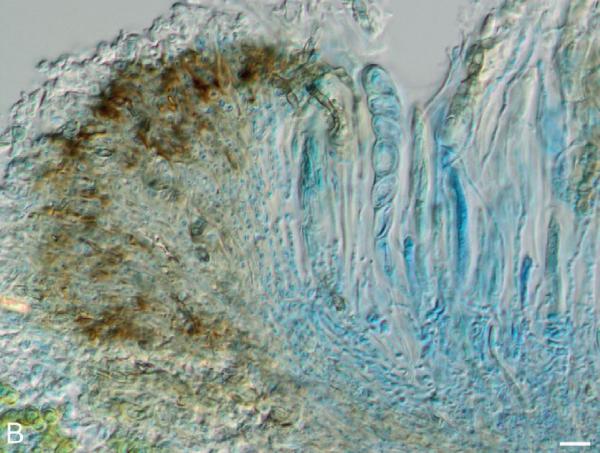
Source: Prieto M., Wedin M., Schultz M. 2024. Phylogeny, evolution and a re-classification of the Lichinomycetes. Studies in Mycology, 109: 595-655. - CC BY-NC-ND
Apothecium with
thick, brownish proper exciple and simple ascospores in LPCB (Arnold 6, M0140087, syntype). Scale bar: 10 µm
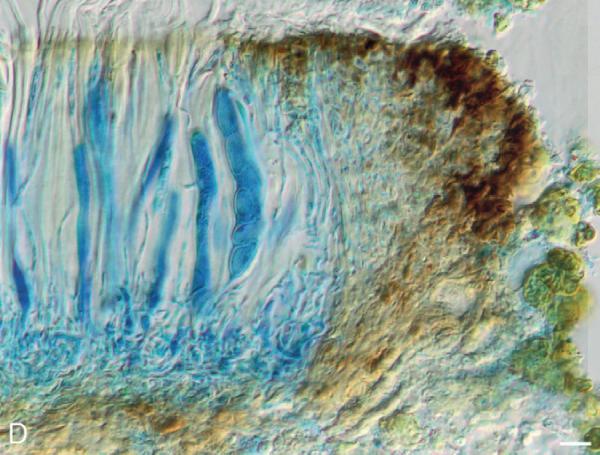
Source: Prieto M., Wedin M., Schultz M. 2024. Phylogeny, evolution and a re-classification of the Lichinomycetes. Studies in Mycology, 109: 595-655. - CC BY-NC-ND
Apothecium with thick, brownish proper exciple, indistinct thalline margin and
simple ascospores in LPCB (Psorotichia lugubris f. atrata Arnold 40, M0140084, type). Scale bar: 10 µm
Growth form: Crustose
Substrata: rocks
Photobiont: cyanobacteria, coccaceous (e.g. Gloeocapsa)
Reproductive strategy: mainly sexual
Poorly known taxon in need of further study
Commonnes-rarity: (info)
Alpine belt: absent
Subalpine belt: extremely rare
Montane belt: extremely rare
Dry submediterranean belt: absent
Humid submediterranean belt: absent
Padanian area: absent
pH of the substrata:
| 1 | 2 | 3 | 4 | 5 |
Solar irradiation:
| 1 | 2 | 3 | 4 | 5 |
Aridity:
| 1 | 2 | 3 | 4 | 5 |
Eutrophication:
| 1 | 2 | 3 | 4 | 5 |
Poleotolerance:
| 0 | 1 | 2 | 3 |
Altitudinal distribution:
| 1 | 2 | 3 | 4 | 5 | 6 |
Rarity
absent
extremely rare
very rare
rare
rather rare
rather common
common
very common
extremely common
Loading data...
Occurrence data
Predictive map

Source: Prieto M., Wedin M., Schultz M. 2024. Phylogeny, evolution and a re-classification of the Lichinomycetes. Studies in Mycology, 109: 595-655. - CC BY-NC-ND
Thallus black, areoles thin with whitish base, apothecia almost lecideine (Psorotichia lugubris f. atrata Arnold 40, M0140084, type). Scale bar: 1 mm

Source: Prieto M., Wedin M., Schultz M. 2024. Phylogeny, evolution and a re-classification of the Lichinomycetes. Studies in Mycology, 109: 595-655. - CC BY-NC-ND
Areoles becoming eroded, apothecia almost lecideine (Hepp Lich. Eur. 728, M0140086, topotype). Scale bar: 1 mm

Source: Prieto M., Wedin M., Schultz M. 2024. Phylogeny, evolution and a re-classification of the Lichinomycetes. Studies in Mycology, 109: 595-655. - CC BY-NC-ND
Areoles thick, irregularly polygonal, apothecia (semi)immersed with widely opened discs surrounded by thin, blackish proper exciple, thalline margin indistinct (Schultz 05566). Scale bar: 1 mm

Source: Prieto M., Wedin M., Schultz M. 2024. Phylogeny, evolution and a re-classification of the Lichinomycetes. Studies in Mycology, 109: 595-655. - CC BY-NC-ND
Apothecium with thick, brownish proper exciple and simple ascospores in LPCB (Arnold 6, M0140087, syntype). Scale bar: 10 µm



